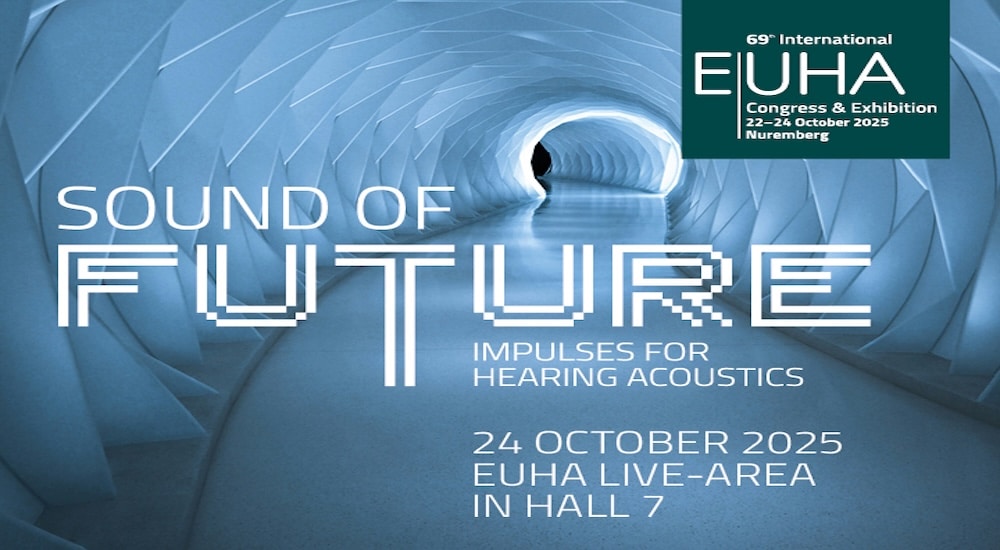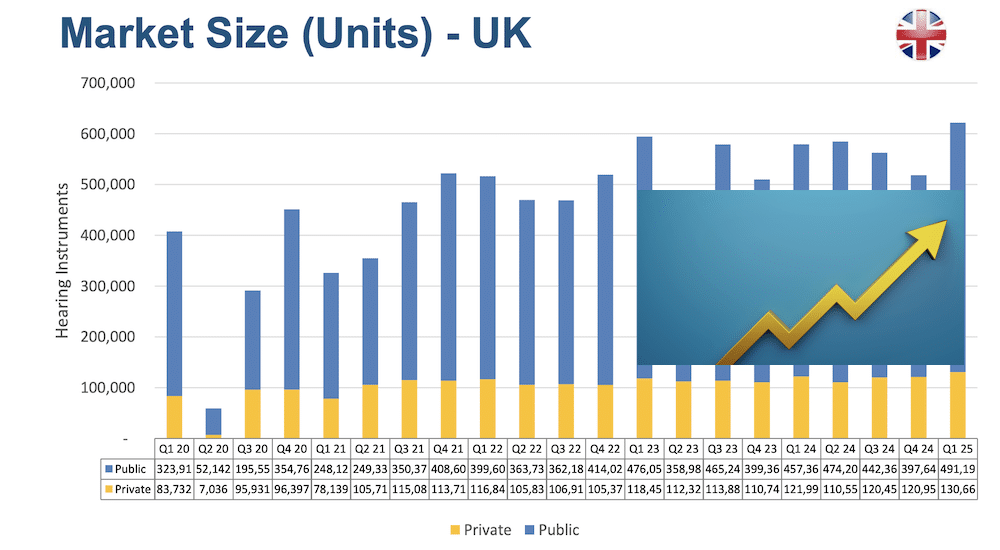How hearing instrument technology impacts user experience
technology
Everyone using hearing instruments has their own, individual, listening needs. BIHIMA spoke with Unitron’s Director of Clinical Research, Don Hayes about how technology has improved user experience and the work they are doing to continue to improve this.

BIHIMA: What are the main developments in hearing technology the industry has seen over the last decade and how have these benefitted the end user?
Don Hayes (DH): The single most important technological development in the industry over the last decade has easily been wireless communication using Bluetooth. This allows us to offer services that were previously impossible.
Hearing instruments can interact with the user’s mobile phone and the user can make minor adjustments to customise their experience using an App. They can also enter information into an App on their phone to describe the listening environment they’re in – information can be sent directly to their Hearing Care Professional (HCP) who can remotely tweak the hearing instrument to adapt to the user’s environment.
Wireless technology has another fun benefit. It is now possible to stream high quality podcasts, music or any audible entertainment with the benefit of appropriately tailored amplification and excellent sound quality. Talk about improving the wearing experience!
"Every individual has their own unique auditory ecology."
BIHIMA:What do you think remains the biggest challenge for wearers of hearing instruments?
Don Hayes (DH): Different users have different challenges, and every individual has their own unique auditory ecology. A common difficulty is users not being able to hear a specific sound such as speech in background noise. However, that may not be the only or even the biggest problem for a given individual. A tech-savvy 50-something who is adept with mobile phone apps and has experience with hearing instruments may want the HCP to push an update to their devices for the purpose of optimising a specific listening environment such as speech in groups at work. But first-time hearing instrument wearer may really need a reminder for things such as how to change a wax guard or how to use their battery charger.
BIHIMA: How is the hearing technology industry addressing this?
Don Hayes (DH): The industry has responded by automating some features in the apps that used to be handled exclusively in the office. For example, new wearers get a lot of basic information about how to manage their new devices during their fitting. But they get so much information all at once, it can be hard to remember everything. Apps have been developed to contain a ‘coach’ in the phone whereby a user can look up the problem they are having and the app will talk them through the solution. Everything the clinical audiologist tells a user about a hearing instrument can be stored in the app and is there as a backup if the user needs clarification. Self-diagnostic hearing instruments are also being developed.
Another example of how technology can be used to overcome problems is applicable for an experienced wearer who has problems in certain types of noise. There are some environments for each person, where understanding speech without straining can be quite critical and they find that the initial settings of the hearing instruments are not quite right. In such cases, technology offers up a couple of options. The first and most direct is the ability within the app to add a manual program to the hearing instrument that is designed specifically for the situation where the problem is occurring. The user can quickly add an appropriate program and then adjust the sound quality to get the best performance in their listening environment of interest.
These adjustments are persistent and anytime the person enters that environment they can use their optimised settings. The HCP can also readjust an appropriate listening environment in the automatic program to match the setting the wearer created for the manual program and the fitting will be automatically optimised in that listening situation. The HCP can provide this support remotely.
Troubleshooting and overcoming problems
BIHIMA: What advances in technology are you focussing on right now?
Don Hayes (DH): We are always working on optimisations to our signal processing. Features such as AutoFocus360 and Dynamic Noise Reduction are always being improved too. Sixty to 80% of the time, you’re looking at the person speaking to you, but it’s in times when you’re not, for example, when listening to lectures or speeches, the Autofocus360 technology comes into its own. Our Autofocus360 is an adaptation which allows instruments to be optimised to a given listening environment – the microphone automatically directs itself at speech.
We are also looking at ways to improve Log It All and Insights features which provide objective and subjective feedback to the HCP about the wearer’s and the hearing instrument’s status in any given listening environment in the field. It is possible with wireless communication for the hearing instrument wearer to provide a rating to the HCP about their experience in a listening environment of interest. The HCP will get not only the listener’s feedback, but also the status of the hearing instruments in the moment and basic acoustic information about the listening ecology at the same time. This type of information is invaluable for troubleshooting problems or for learning what is working well when a problem has been overcome.
The pandemic effect
BIHIMA: How has the pandemic affected the use of hearing instrument technology for the user?
Don Hayes (DH): The pandemic of course, waylaid everybody’s ability to deliver and receive all manner of services. There were 3 months last year where we didn’t see anyone. Then, following strict guidance we started seeing people again but the population we see are the most vulnerable to COVID-19, so, to keep people safe, we adapted to remote support.
Bluetooth technology has allowed fittings to move out of the personal space realm and into the cyberspace realm when required. Of course, you always want someone seated in front of you when they need your help, but when social distancing is required, the safest thing for all concerned is to use the new technology and provide distance support. I think it was a life saver for many clinics and for many hearing instrument wearers as well.
BIHIMA: What future developments can you see that will further benefit the end users of hearing instruments?
Don Hayes (DH): A hearing instrument is primarily a sound delivery device. In many respects we still treat them like they are just amplifiers, but they are so much more than that now. Hearing instruments are crossing the line into consumer electronics and should be thought of as platforms for all manner of sound delivery and more. Not only do they amplify environmental speech, but they also stream music and even sound from television. You can answer your phone without ever taking it out of your purse. We have even begun to add sensors that detect movement. The hearing instrument is heading toward becoming the new Fitbit. The possibilities are enormous – this is an exciting time to be in this line of work.
We’re coming to an age where over the counter (OTC) hearing instruments will be the norm – just as you can pick up a pair of reading glasses without a prescription, hearing instruments will be available for you to test and try yourself in the shop with immediate impact. In studies, which have compared clinician-fitted hearing instruments to self-fitted, people have always preferred clinician-fitted but once over the counter hearing instruments are available a larger number of people will be able to access technology to improve their hearing.
I believe the accessibility of OTC hearing instruments will bring more people to wearing instruments at an earlier age, help reduce the stigma surrounding the wearing of hearing instruments and ultimately lead to more people visiting clinical audiologists when they want to upgrade their listening experience.
ABOUT BIHIMA
The British Irish Hearing Instrument Manufacturers Association (BIHIMA) represents in the UK and Ireland the world’s leading hearing instrument manufacturers. We work in partnership with other professional, trade, regulatory and consumer organisations within the health care and charitable sectors. Our goal is to raise awareness of the benefits of hearing well, making available the very latest in hearing technology aligned to consumer and hearing healthcare priorities to enhance the lives of those affected.
Visit www.bihima.com



